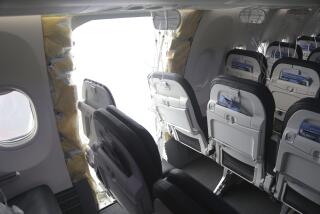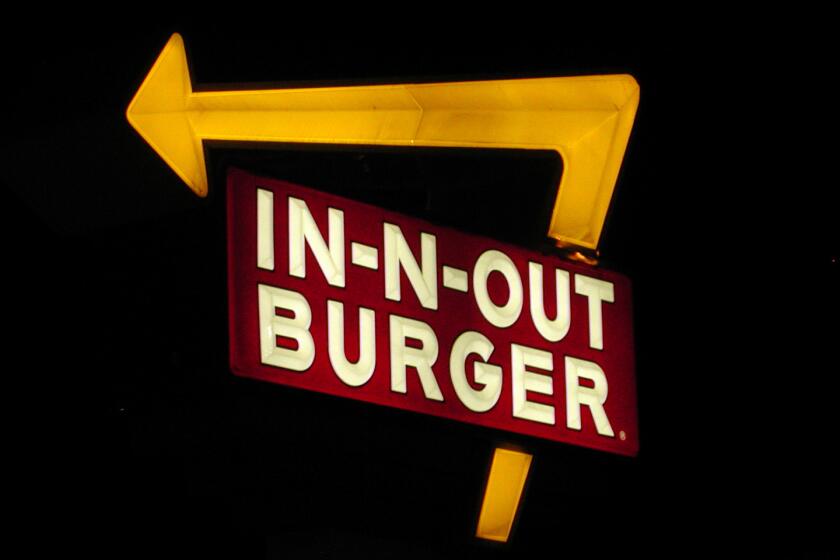NEWS ANALYSIS : King Kong of the Airlines : American’s Latest Fare Cut Demonstrates Its Clout
- Share via
Robert L. Crandall knows how to get his message across.
Earlier this week, the chairman of American Airlines made his point by introducing fares that are so low they could easily send the industry into a financial tailspin. The half-price promotion came in response to a competitor’s efforts to fiddle with American’s new fare structure.
“There is very little doubt that American was sending a message,” one competing airline manager said. “You mess with the pricing structure and we are going to hurt you.”
The episode once again demonstrated that American is the nation’s largest carrier and acts like it.
Even though United and Delta rival the Dallas-based carrier in size and financial muscle, American is by far the most aggressive of the three, whether in adopting new products or throwing its weight around to reshape the industry as it sees fit.
And American has plenty of weight to throw around. In the last decade, the carrier has doubled its size and surpassed United as the nation’s largest carrier with a 20%-plus share of domestic passenger traffic and annual revenue of about $12 billion. The carrier fields a worldwide fleet of more than 600 aircraft and 116,000 workers.
Regarded as a risk taker and innovator, some of American’s gambles have paid off handsomely, becoming industry standards. One American innovation--the frequent-flier program--has worked so well that it has been labeled as anti-competitive.
The carrier has also been an industry leader in compiling and analyzing traffic and consumer information gathered through computers. Sabre--American’s computer reservation system--gives the airline a wealth of information about the travel habits of millions of Americans. The complex analysis of traffic patterns and price has helped American fill empty seats while maintaining as high a fare level as possible.
“Through that process American has been able to target and cultivate markets much more profitably than other carriers,” said Ernest Arvai, an airline industry consultant.
The driving force behind American’s expansion over the last decade has been Crandall, a thin, wiry man known for his straight talk and no-nonsense manner.
“The culture at American is in many ways a reflection of (Crandall’s) personality and drive,” said Dan Kasper, a transportation analyst at Harbridge House, a Boston-based consulting firm. “He is relentless in pushing American in the direction he wants to go.”
Unlike other publicity-shy airline executives, Crandall makes his views on the industry a public affair. Last year, he took the lead in blaming much of the industry’s woes on weak carriers that chop fares while operating under bankruptcy protection.
Crandall also put American in the forefront last April when it introduced a simplified four-tier fare structure aimed at reducing the costly fare wars and promotions that have battered the industry over the last decade. American went out of its way to demonstrate its deep commitment to the structure, which was adopted by the rest of the industry.
Earlier this week, Northwest Airlines triggered the latest fare war by offering adults free travel when accompanied by a child. United and Delta responded by adopting similar programs. But American fired back by cutting its summer vacation fares in half.
American officials say the promotion was only a competitive response to defend its market share.
“We had to respond in a way that fit into that structure,” American spokesman Marty Heires said. “We certainly don’t feel that this is a message to our competitors.”
American is well positioned with the financial resources, routes and reputation to withstand any financial losses and hold its ground, say industry analysts. Weaker airlines may not be so lucky.
“American is clearly signaling to the industry that what American wants, American will get,” said Barbara Beyer, president of Avmark, a Washington-based airline industry consulting firm.
Airline Market Share The nation’s three largest airlines captured nearly 60% of passenger traffic during the first four months of 1992.
Airlines / Share of U.S. Passenger traffic
American: 21.0%
United: 18.9%
Delta: 17.2%
Northwest: 12.6%
Continental: 9.9%
Other: 20.4%
Source: Avitas
More to Read
Inside the business of entertainment
The Wide Shot brings you news, analysis and insights on everything from streaming wars to production — and what it all means for the future.
You may occasionally receive promotional content from the Los Angeles Times.










